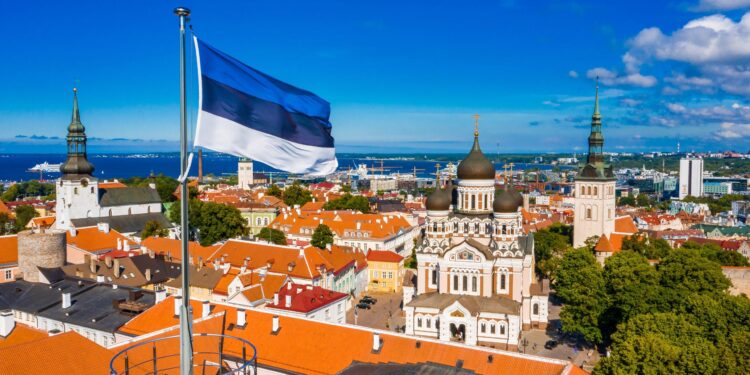Estonia is making significant strides in expanding its renewable energy capacity with the advancement of the Saare 1 offshore wind project. Situated off the coast of Saaremaa Island, this ambitious initiative marks a key step in the country’s efforts to reduce carbon emissions and enhance energy security. As Estonia positions itself at the forefront of the Baltic region’s clean energy transition, the Saare 1 project is set to become a cornerstone of its offshore wind portfolio, promising substantial contributions to the national grid and the broader European green energy goals.
Estonia Accelerates Saare 1 Offshore Wind Project to Boost Renewable Capacity
The Saare 1 offshore wind project is set to be a game-changer for Estonia’s renewable energy landscape, with accelerated development timelines signaling the government’s commitment to sustainable growth. Located in the Baltic Sea near Saaremaa Island, this initiative aims to harness powerful offshore winds through cutting-edge turbine technology. With an anticipated capacity exceeding 500 MW, the project is expected to supply clean energy to over one million households, drastically reducing the country’s dependency on fossil fuels and cutting annual carbon emissions by an estimated 1.5 million tons.
Key highlights of the Saare 1 project include:
- Advanced turbine installations designed for optimal efficiency and durability in harsh marine conditions.
- Strategic partnership with leading renewable energy firms ensuring innovation and investment flow.
- Accelerated permit process supported by streamlined regulatory frameworks.
The government has also prioritized community consultations and environmental assessments to safeguard marine biodiversity. Below is a summary of the projected benefits and milestones:
| Milestone | Expected Completion | Impact |
|---|---|---|
| Finalizing permits | Q4 2024 | Clears path for construction |
| Turbine installation start | Q2 2025 | Initiates energy generation phase |
| Commercial operation | 2027 | Full-scale energy delivery |
Key Technological Innovations Driving Efficiency in Saare 1 Development
The Saare 1 offshore wind project is leveraging cutting-edge technology to maximize energy output while minimizing environmental impact. Among these advancements, the deployment of next-generation turbine blades with adaptive pitch control stands out. These blades dynamically adjust to wind conditions in real-time, significantly boosting efficiency and durability. Additionally, the integration of AI-powered predictive maintenance systems ensures that potential issues are identified before they lead to downtime, optimizing operational continuity and reducing maintenance costs.
Complementing these innovations is the use of advanced subsea power transmission cables that reduce energy loss during transport. The project also embraces smart grid connectivity, allowing seamless integration with Estonia’s national power network. Below is a summary of the key technologies and their benefits:
| Technology | Function | Benefit |
|---|---|---|
| Adaptive Turbine Blades | Real-time pitch adjustment | Increased energy capture and blade lifespan |
| AI Predictive Maintenance | Fault detection and forecasting | Reduced downtime and maintenance costs |
| Subsea Power Cables | Electricity transmission | Lower energy loss across distances |
| Smart Grid Integration | Grid communication and balance | Optimized energy distribution and stability |
Policy Recommendations to Support Estonia’s Offshore Wind Expansion Efforts
To accelerate the Saare 1 offshore wind project and similar initiatives, Estonia must prioritize clear regulatory frameworks that streamline permitting processes. Simplifying administrative procedures will reduce project delays and attract greater investor confidence. Additionally, fostering public-private partnerships through targeted incentives can catalyze innovation and infrastructure development within the renewable energy sector.
Another critical focus should be on strengthening grid integration capabilities to handle intermittent wind energy effectively. Investing in smart grid technologies and energy storage solutions will ensure stability and optimize output. Enhanced regional cooperation with Baltic neighbors could also facilitate resource sharing and create a more resilient energy network.
- Introduce fast-track permitting procedures for offshore wind developments.
- Offer tax breaks and grants to encourage private investment.
- Upgrade grid infrastructure with emphasis on smart technologies.
- Promote cross-border energy collaborations within the Baltic region.
| Policy Area | Key Action | Expected Impact | ||||||||
|---|---|---|---|---|---|---|---|---|---|---|
| Regulatory Reform | Streamline approval workflows | Faster project deployment | ||||||||
| Financial Incentives | Introduce tax rebates and grants | Increased investor participation | ||||||||
| Grid Modernization | To accelerate the Saare 1 offshore wind project and similar initiatives, Estonia must prioritize clear regulatory frameworks that streamline permitting processes. Simplifying administrative procedures will reduce project delays and attract greater investor confidence. Additionally, fostering public-private partnerships through targeted incentives can catalyze innovation and infrastructure development within the renewable energy sector. Another critical focus should be on strengthening grid integration capabilities to handle intermittent wind energy effectively. Investing in smart grid technologies and energy storage solutions will ensure stability and optimize output. Enhanced regional cooperation with Baltic neighbors could also facilitate resource sharing and create a more resilient energy network.
|















